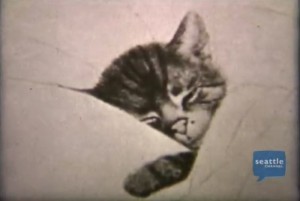
"The 1938 Seattle film, shot by Iwao Matsushita, features chubby cats playing, eating, and being cuddled by their humans." K5 News.
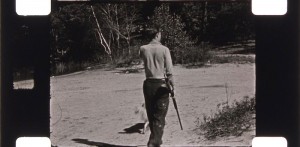
"Hunting, cast of "Boy," played by Winthrop Rolfe, and "Dog," played by Teddy. Boy, walks with Dog through the forested mountainside, gazes at views over the alley, drinks water from a rushing stream, and kneels to shoot at birds." Notes by (NHF) Chris Reed and Chris Castiglia, June 2013
"Animated puppets, dogs in this case. Synchronized with a song of the same title and cleverly done." PSA Journal, Nov. 1956, 45.

"Humphrey, a loveable dog built low to the ground and with big ears. He does for a playful run in the park. He flushes out a cup and this releases the genie who extends three wishes to Humphrey. Our "fido" wishes himself into the form of man. But in the actions that follow, he is still Humphrey. In the end genie returns Humphrey to h is conventional self and there is a captivating happiness in again being a dog" PSA Journal, Nov. 1960, 40.
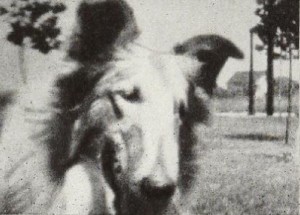
"Children and pets are generally lovable and always interesting; but filming them is not a simple task, as many amateurs have found out. Raymond J. Berger, in Lassie Stays Home, accomplishes it with a sure touch and an ease that will be the envy of his fellow filmers. The excellently planned story tells of a lost child who is found by Lassie, the loyal canine family member, after the baby's somewhat older sister hunts her frantically. No adult appears in any of the footage; and remarkably enough, one does not sense the directing mother, just out of camera range. The whole movie goes forward as if the children and Lassie were entirely alone, with the camera miles away. Here is 8mm at its best and here is a film that every amateur would be proud to have made." Movie Makers, Dec. 1945, 494.
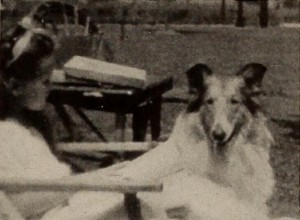
"In a relatively short period of filming, Raymond J. Berger has mastered a type of photoplay which a great many persons have expressed a desire to make, the story film featuring a child and a pet. His script, a simple and unpretentious recounting of how an invalid child wills herself to walk again, to go to the aid of her injured dog, proves an ideal vehicle for Mr. Berger's young daughter and her handsome collie, Lassie. This 8mm. Kodachrome picture, scored with re-recorded music, is noteworthy for its excellent framing and splendid closeups. Particularly engaging is the sequence, after the accident, showing the mutual recovery of the two stars. Young Miss Berger, considering the limited histrionic ability of a natural child, plays her role with grace and assurance; her crying scenes and the ingenuous frolics with Lassie are unusually credible and well performed. Mr. Berger deserves credit for his planning and fulfillment of a screen play that revolves around two such charming personalities." Movie Makers, Dec. 1946, 486.
"Under the classification of Home Movie, Van Dee Sickler of Los Angeles was awarded the $50.00 prize for his picture 'Mishcief,' a 16 mm subject in 200 feet. The continuity is evolved around his wife, a Scotch terrier, a cat and a bird. The continuity, titles and photography of this picture were very good." American Cinematographer, Dec. 1934, 376.
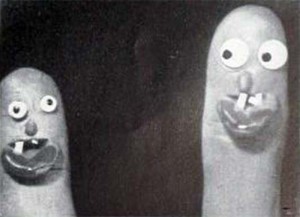
"A perfectly delightful holiday in personal filming, replete with humor, and imagination, is the comedy, Nite Life, produced by J. Kinney Moore, entirely in Kodachrome and, what is more, almost entirely in interior Kodachrome, by artificial light. Mr. Moore, in his work, refutes the contention, sometimes heard, that the amateur should be wary of film comedy. And, beside negotiating this pinnacle successfully, the producer has added an outstanding technical handling of Kodachrome, as well as a highly diverting and intelligent use of the various camera illusions it is possible to produce with the aid of modern 16mm. equipment. The obvious zest and pleasure with which the actor producer entered into the creation of this film add immeasurably to its value as a genuine document of personal filming achievement. Examples of carefully planned and executed trick photography follow one another in such rapid succession in the film that the spectator is left time only to gasp. However, these tricks are not executed simply for their own sake, but strictly in accordance with the furtherance of the plot. It must be said that, in the second part of the film, the author does yield slightly to the temptation of attenuating the action somewhat in order to spin out his bag of tricks. But the film as a whole is so delightful that any audience could easily forgive this small shortcoming." Movie Makers, Dec. 1936, 542.
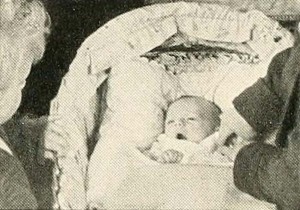
"With Number Three Arrives, John Martin carries on the continuity both of his charming family and of his delightful films of them, so ably introduced by his last year's award winner, A Day with the Young Martins. Here again are the sure feeling for cinematic story technique, the nicely effective angles and the smooth sequencing which belies any need for titles. Added to these deft and familiar abilities of Mr. Martin's work, the current production brings to light a delightful flair for farce comedy by the harassed father and a family terrier rivaling, on a small scale, the best of Hollywood's canine thespians. Once more, Mr. Martin has proved beyond argument that a well planned family film may be of interest to all who see it." Movie Makers, Dec. 1937, 630.
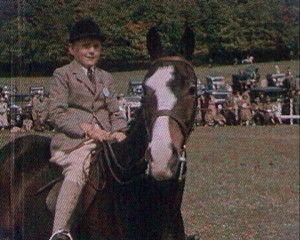
"The film includes shots of the departure of the riders in the early morning mist; the Master of Fox Hounds, Stanley Barratt, leading foxhounds by foot over a wooden bridge; riders and hounds patrolling a covert at Juniper Hill; the training of young hounds after a kill; horses and hounds assembling after the cubbing hunt. Scenes … include the meet in the early morning mist; the hounds by the wooden bridge; the location of the kill. A small crowd watches as a fox that has gone to ground is dug out; after the kill the fox’s body is thrown in the air for the hounds and a rider trains the young hounds. The films reference the same location, crowd (including two dogs, which are not foxhounds) and the same rider training the young hounds. Dufaycolor film of scenes from the Great Missenden Show of 1935. Shots include footage of some of the competitors in a junior show jumping event and the presentation of the prizes afterwards" (EAFA Database).
Total Pages: 5